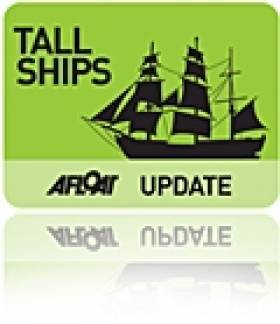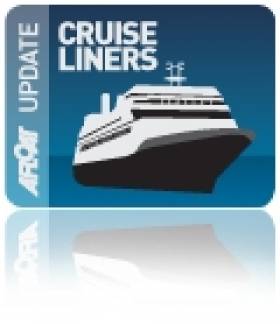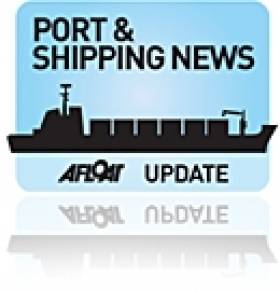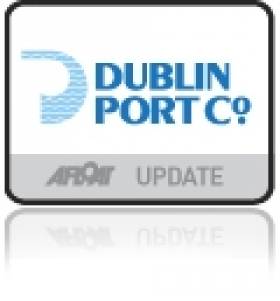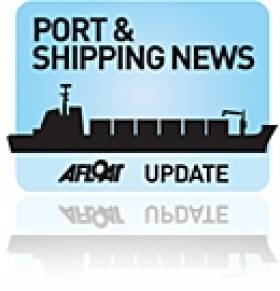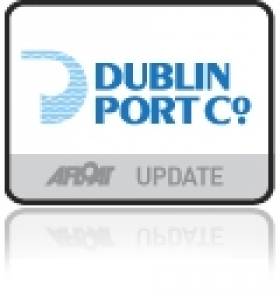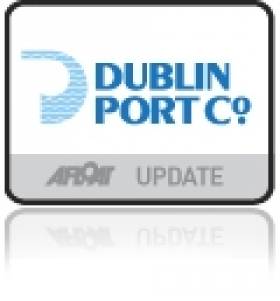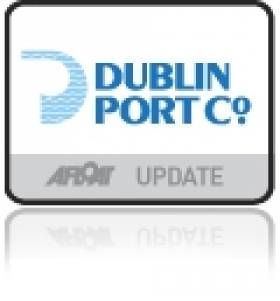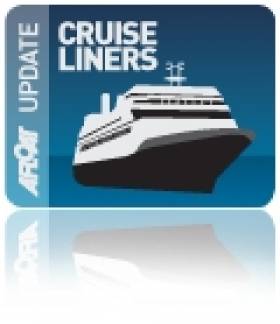Displaying items by tag: Dublin Port Company
Tall Ships Coming to Dublin's New River Festival
#tallships – Sail Training Ireland have announced the visit of a number of Tall and Small-Ships to Dublin this summer. The 6 ships will sail from Belfast to Dublin, and arrive in Port in time for the Dublin Port River Festival (June Bank Holiday Weekend). This is an amazing opportunity open to anyone interested in experiencing life at sea on a traditional ship and sailing into the Capital on a tall ship voyage.
The ships are scheduled to arrive in Dublin on the 31st of May and will be in port for the June bank holiday weekend as part of the festival. You can sail into Dublin port on board one of the six majestic, traditional ships. They leave Belfast on the 28th of May and arrive in Dublin on the 31st May.
The berths cost €320 each for four days aboard.
The hope is to make this initiative an annual sail-training programme to Dublin. There will be six ships taking part: The Pelican of London, Soteria, Johanna Lucretia, Ruth, Irene and Gulden Leeuw (Images right).
The Lord Mayor of Dublin, Cnsllr Naoise Ó Muirí recently said: "One of the huge benefits of the Tall Ships is the experience offered to the trainees that take part in voyages. Through Sail Training Ireland, Dublin City Council together with Dublin Port Company funded 40 young people to sail on the ships from Spain to Dublin City during the Tall Ships Races (2012). This is a life changing experience that challenges ordinary young people to achieve their full potential and opens their horizons to great possibilities. Sail Training Ireland is making this experience available to all Irish people regardless of social, economic, physical or other circumstances. As Admiral of the Port, this is precisely the kind of activity that I support as a means of integrating the people of Dublin with its maritime heritage."
The Gathering Brings Bonanza with Record Liner Calls to Dublin Port
#GATHERING LINERS – A record number of cruiseships are to call to Dublin Port during the inaugural Gathering in 2013, where for the first time the number of cruiseship calls will surpass 100 during the season, writes Jehan Ashmore.
In 2013 the capital port is to welcome a total of 108 calls, (including several ships making repeat calls) stretching between April to October. Last year, 90 such ships made individual calls to the capital which welcomed 100,000 passengers and bringing between them €35-50m to the local economy.
The rise in cruise calls reflects Dublin Port Company's Masterplan 2012-2040, as previously reported on Afloat.ie, where the masterplan has included identifying the need to construct a new cruise facility by 2015, at the North Wall Quay Extension close to the East Link Bridge.
Launching the season will be the 700 passenger Discovery which although not new to Dublin Port, her arrival in early April will be a first under the Cruise & Maritime Voyages brand, having repalced Ocean Countess. The Discovery will also continue to maintain cruises for owners Voyages of Discovery.
Among the usual operators is Princess Cruises regular Caribbean Princess, however, the Gathering will be attracting several newcomers to include US based operator Carnival Cruises, whose giant Carnival Glory (2003/ 110,239 gross tonnes) has a capacity for almost 3,000 passengers and more than 1,100 crew.
Dublin Port can also look forward in welcoming a maiden port of call by the $547m MSC Magnifica in May. The 294m long newbuild is a larger fleetmate of Mediterranean Shipping Company's MSC Lirica, which last year made a debut docking to Dublin Port and to Cork (Cobh).
Ports & Shipping Review: Celtic Link Ferry 1st Year, Collision in Rosslare,Ports to Gain from Energy Sector, Volunteers for Tallship Dry-Docking and More...
#PORTS & SHIPPING REVIEW - Over the last fortnight Jehan Ashmore has reported from the shipping scene where Celtic Link Ferries celebrated their first year in service of the ro-pax ferry Celtic Horizon which operates the Rosslare-Cherbourg route.
Also in Rosslare, Stena Line's Fishguard ferry Stena Europe attempted to berth in high winds which led to the vessel making contact with the bow of Irish Ferries cruiseferry Oscar Wilde.
Further ferry news, though from Cork where last weekend saw the final end of season round-trip sailing to Roscoff operated by Brittany Ferries cruiseferry Pont-Aven.
According to the Irish Maritime Development Office (IMDO), Irish Ports are in a good position to capitalise on the growing demand for offshore renewable energy services.
Following the tallship Tenacious 'Open Day' in Dublin Port in late October, the 65m long barque returned to Dublin Bay, but instead made an overnight visit to Dun Laoghaire with 28 crew trainees on board. Her owners the Jubilee Sailing Trust are looking for volunteers to carry out tasks while she undergoes dry-dock this month.
Turnover in the Dublin Port Company has edged fractionally higher in 2011 at €69.1m and operating profit also slightly increased by €0.8m to €27.8m on 2010 figures.
An apt office location for Decisions (D4H) a software firm specialising in emergency response technology has made its new home at a building block adjacent of the Baily Lighthouse in Dublin Bay.
Slight Profit Rise for Dublin Port
#DUBLIN PORT - Turnover at the Dublin Port Company has edged fractionally higher last year at €69.1m, with profits also increasing slightly.
Exports were up at the commercial semi-state port to 11.5 million tonnes but were offset by a 2pc decrease in imports to 16.6 million tonnes. Operating profit increased by €0.8m to €27.8m on 2010.
The State also took three times more cash in dividends than in 2010. In accounts filed with the companies office, the company said it paid out €16.5m, this compares with €5.5m the previous year.
For more the Irish Independent has a report HERE.
Ports & Shipping Review: Stena HSS Comes and Goes, Shackleton Exhibition, Cork Harbour Open Weekend,Cargoship Dispute and Ferry Strike
#PORTS & SHIPPING REVIEW - Over the last fortnight Jehan Ashmore has reported from the Shipping scene where the Stena Line HSS seasonal-only operated Dun Laoghaire-Holyhead service completed its final sailing for the summer, though sailings are to resume over Christmas/New Year period.
Despite the HSS Stena Explorer's last high-season sailing on 11 September, the fast-ferry made a return call to Dun Laoghaire five days later, for a special freight-only charter, to load stage trucks following the Lady Gaga concert held in the Aviva Stadium, Dublin.
Incidentally the ferry terminal in Dun Laoghaire now features a new exhibition space, where the Tanaiste Eamonn Gilmore, T.D. officially launched the Shackleton Endurance Exhibition – 'Triumph Against All Odds'.
The Cork Harbour Open Weekend provided a great opportunity for locals and visitors alike to see what the world's second largest natural harbour has to offer, in terms of activities held on and off the water, including trips to Spike Island.
At Cobh a detained French registered fishing vessel was escorted to the town by the Naval Service OPV L.E. Roisin, following alleged breaches of technical fishing regulations.
A Dutch owned cargoship, the Julia, which docked in Drogheda Port faced arrest, following claims by its crew that they were owed in total $102,700 in unpaid wages to them.
The summer may be over, but that's not stopping Irish Ferries offering Autumn short shopping breaks and wine mini-cruises on the route to Cherbourg.
While rivals Celtic Link Ferries, found themselves taking additional business at short notice, as passengers were transferred from the cancelled Brittany Ferries Roscoff-Cork sailing, following strike-action by French staff over a dispute on new working conditions.
Celtic Link Ferries will however be expecting a response from customers as they take part in Gathering 2013, as the ferry operator are offering free car travel on 15th March next year in advance of St. Patricks Day celebrations.
Leo Varadkar, Minister for Transport, has appointed James Frater to the board of the Dublin Port Company. The Scot has held senior positions at ports in the UK, Egypt, Hong Kong and Oman.
US Navy Dock Landing Ship Departs Dublin Bay’s Shipping Scene
#US NAVYSHIP DEPARTS – At lunchtime the United States Navy dock-landing ship USS Fort McHenry (LSD-43) departed Dublin Port, after her visit for American Football Week, writes Jehan Ashmore.
Waiting out in Dublin Bay was the Irish Naval Service 'flagship' L.E. Eithne (P31) which had gone to anchorage having also stayed in the capital concurrently to the naval visitor. As USS Fort McHenry headed out on an easterly direction L.E. Eithne got underway too and proceeded southbound.
Other shipping activity in the bay included Seatruck Ferries newbuild freight-only ferry, Seatruck Progress, the ro-ro vessel serves on the Dublin-Liverpool route. Also at anchorage was Broström Tankers coastal tanker Bro Genius (2003/4,107grt).
Further out in the bay at the North Burford Buoy was Dublin Port Company's multi-cat Rosbeg, the workboat tender craft performs a wide variety of duties inside and outside the port, from cleaning the river to quay maintenance, bed levelling and buoy-handling.
Closer to shore, nearer to Dun Laoghaire Harbour was the cutter Cosantoir Bradan (meaning Salmon Defender) which as previously reported is on charter from the Central Fisheries Board to the Geological Survey of Ireland (GSI). They are using the cutter in conjunction with their RV Keary for survey work, including bottom surveying.
RV Keary attended the Dublin Tall Ships Races Festival, where she was moored in Grand Canal Dock which was also occupied by a fleet of narrowboats moored at the marina of the Waterways Visitor Centre.
Dublin Port Seeks Position of Chief Engineer
#DUBLIN PORT POSITION – Ireland's busiest port operated by the Dublin Port Company, which last year handled over 28m tonnes in goods, is currently seeking applications for the position of a Chief Engineer.
To apply, send full personal, career and current remuneration details to the following contact information provided HERE. Noting further background details of the position can also be found through this link.
#DUBLIN PORT PHOTOS - Starting today and tomorrow (Sat 6th July) is a photographic exhibition of 'Dublin Docks' which captures the daily lives of those working in the port spanning five decades (1940-1990).
The exhibition is organised by the Dublin Dockworkers Preservation Society and will be shown at the Sean O'Casey Community Centre on St Mary's Road, East Wall, in the heartland of the north inner city close to the older 'Docklands' now dominated by the financial sector.
The exhibition opens officially this evening at 7pm and besides the 40 images selected for display, visitors will be able to view a slide show that shows over 1,000 other photographs donated by dockers and their families. The images will remain on display on the Saturday too from 10am to 4pm.
Also tomorrow at 2pm in the same venue, Labour historian Francis Devine will give an illustrated talk on Dublin Dockworkers and their Trade Unions. Later in the evening at 9.30pm, musician Paul O'Brien ("Songs from the North Lotts" and "Port to Port") will perform at the Green Room Bar on Lower Sheriff Street.
There will be a further opportunity to see the exhibition during the Dublin Talls Ships Race Festival (23-26 August) as previously reported. The large collection of beautiful black and white photographs depicting the maritime history of the port through the ages will be shown in the CHQ Building at George's Dock.
Former Dublin Port Tug on Delivery Voyage to Portugal
#SOLD DUBLIN TUG SETS SAIL – With a career spanning nearly four decades, the former Dublin Port Company tug Ben Eadar (1973/198grt) departed over the weekend on her delivery voyage to serve new owners in Portuguese waters, writes Jehan Ashmore.
Prior to her departure, Ben Eadar was moored alongside the grab-hopper dredger Hebble Sand (1963/757grt) in Alexandra Basin, which too awaits her delivery voyage to new owners.
It was envisaged that the veteran tug would be towed on the delivery voyage to Portugal however she left Dublin Port for the final time on Saturday under her own power. Since her departure the 17 tonnes bollard pull (tbp) veteran vessel called en route to Milford Haven on Monday before making a longer leg across the Bay of Biscay.
She still retains her original name since her launch at the Yorkshire shipyard of Richard Dunston Ltd, Hessle, however she was re-flagged in Vanuatu, where her change of registry is Port Vila, the capital of the south Pacific island nation.
Ben Eadar became the last of three tugs sold this year to depart Dublin Port, having been brought by ARPA & Co. of Setubal in Portugal. The 17-tonnes bollard pull (tbp) tug follows her younger 35tbp Voith- Schneider fleetmates, Cluain Tarbh (1991/268grt) and Deilginis (1997/335grt). The former was sold to Scottish interests and the latter remains in Irish waters based out of Killybegs.
The trio represented the last of the older generation of a tug fleet built for the Dublin Ports & Docks Board (DP&DB) which is now the Dublin Port Company. The tugs were all given names of Dublin Bay coastal suburbs spelt in Irish and were replaced by a pair of more powerful 50tbp newbuilds introduced from 2009.
Cruiseship on Atlantic Repositioning Cruise
#ATLANTIC REPOSITIONING CRUISE – Another massive cruiseship the Caribbean Princess (2004/112,894grt), is to dock in Dublin Port around lunchtime today, having crossed the Atlantic, from Halifax, Nova Scotia in Canada, writes Jehan Ashmore.
The 3,600 passenger capacity 'Grand' class ship operated by Princess Cruises is on a repositioning cruise voyage from North America to Europe. She is to spend the season running cruises based out of Southampton.
Caribbean Princess retains her 'Skywalkers' Nightclub mounted 15 decks at the stern, unlike her sister which called to Dublin Port last month. The structure was removed primarily on grounds of weight so to increase fuel efficiency.
The Bermuda flagged vessel is to berth at Ocean Pier in the centre of the docks which this season is to welcome a total of 90 cruiseships bringing 100,000 passengers contributing €35- €50m to the Dublin economy in 2012. It is estimated that the cruise sector has contributed over €350 million to the capital in the last decade.
Vessels such as the Caribbean Princess and larger-sized ships could be a familar sight closer to the city-centre should proposals to build a €30m dedicated cruise terminal take-off at a site adjacent to the East-Link Bridge, as part of the Dublin Port Company's Masterplan 2012-2040.


























